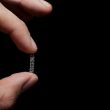In the last decade, the interest in atheroma plaque morphology and its role in clinical events has been on the rise. Several studies have shown the use of IVUS to sort out plaque into lipidic rich (LRP) and thin cap fibroatheromas (TCFA). These morphologies have been associated with major cardiovascular events at followup. At...
Coronary Angioplasty Evolution According to Syntax II: 5-Year Followup
It has been long since the SYNTAX (NEJM 2009) came out comparing percutaneous coronary intervention (PCI) against coronary artery bypass grafting (CABG). That emblematic study associated PCI with first generation drug eluting stents (Taxus) with increased major cardiac and cerebrovascular events (all-cause mortality, AMI, stroke, or any revascularization – MACCE) vs. CABG, at 5 years,...
Prophylactic Rivaroxaban Therapy for Left Ventricular Thrombus after ST-Segment Elevation Acute Coronary Syndrome
The incidence of left ventricular thrombosis (LVT) after anterior ST-segment elevation myocardial infarction (STEMI) ranges from 4% to 26%. This is associated with bad long-term evolution. In the past, triple-scheme therapy (vitamin K antagonist plus dual antiplatelet therapy) was recommended to prevent LVT, despite the lack of high-quality scientific evidence and an increase in the...
RESTORE | Using Rivaroxaban to Prevent Radial Artery Occlusion After an Intervention
Radial access has long demonstrated its benefit, but one of its most feared complications is radial artery occlusion (RAO), which can vary from 1% to 5% according to different series. There is currently no significant information on post-procedural anticoagulation and the presence of RAO at follow-up. The aim of the randomized RESTORE study was to...
5-year TVF and MACCE in patients with deferred of revascularization after FFR: Is FFR enough?
Fractional flow reserve (FFR) has been shown effective and safe by different studies, yet not at 5 years. The aim of this multicenter registry was to assess the impact of thrombotic risk (as per CREDO-Kyoto score) as a predictor of cardiovascular events at 5 years in patients with deferred revascularization after FFR measurement. The score...
ACC 2022 | PACMAN AMI
Atherosclerosis plaque causing AMI is often large in volume, high in lipids and have a thin fibrous cap. Statins often reduce atherosclerosis progress, but the impact of PCSK 9 inhibitors (alirocumab) after acute coronary syndrome is scarcely known. The aim of this study was to determine the effect of alirocumab using intracoronary imaging (IVUS, OCT,...
CRUNCH Registry: An Option for Underexpanded Stents
Coronary calcification hinders both stent transfer and implantation, and has been associated with a higher risk of complications. Coronary perforation is the worst of them. In turn, these calcifications affect the preparation of coronary plaque, resulting in an underexpanded stent (US), which is a strong predictor of restenosis and early thrombosis. For the management of...
Are There Differences Between Women and Men After a Percutaneous Intervention?
Prior research has shown that women with coronary artery disease who undergo percutaneous revascularization present more comorbidities, require less aggressive treatments, have greater long-term morbidity rates and worst functional status and/or post-procedure angina. This study used data from the CPORT-E trial (Cardiovascular Patient Outcomes Research Team Non primary Percutaneous Coronary Intervention) to assess baseline differences...
STEMI: Can We Omit Stenting?
The recommended treatment for ST elevation acute myocardial infarction (STEMI) is early PCI, typically stenting. However, stent implantation always involves the risk of intravascular complications, such as stent thrombosis or restenosis. Sometimes stable flow is restored to the target vessel after initial PCI and we can omit stenting when there is no angiographically significant residual...
Same-Day Discharger After TAVR: Are We There Yet?
Same-day discharge (SDD) has been shown to be effective in angioplasties and some peripheral procedures, but the pandemic—because of the burden it caused on the healthcare system—has forced the optimization of hospitalization times for other pathologies and procedures. This strategy is yet to be tested in transcatheter aortic valve replacement (TAVR) due to the possible...









